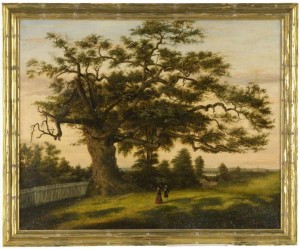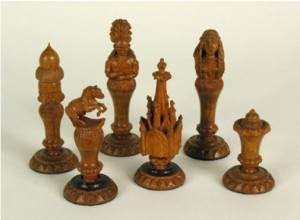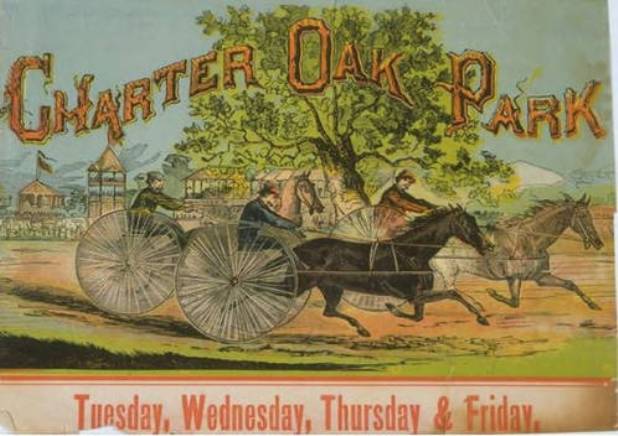By Erin Strogoff for Your Public Media
Charter Oak Bridge. Charter Oak State College. Charter Oak Park. Why are so many places and things in Connecticut named “Charter Oak”? The name stems from one of Connecticut’s most famous legends.

Charles De Wolf Brownell, Charter Oak, 1857, oil on canvas – Connecticut Historical Society
In 1662, the colony of Connecticut, owned and governed by England, was granted a Royal Charter by King Charles II. The “Connecticut Charter” permitted the colony to make some of its own rules and to elect certain officials. Charles’s death in 1685 brought his brother, James II, to the throne. James disapproved of the Royal Charters and demanded their return. The charters interfered with James’s plan to establish the Dominion of New England—a combination of the New England colonies and the colony of New York under the leadership of one royal official.
In 1687, Sir Edmond Andros, the Royal Governor of the Dominion, met with leaders of the Connecticut colony in Hartford. Debates continued for hours as the colonists steadfastly refused to give up the Charter. According to legend, all of the candles in the meeting house suddenly blew out and, during the confusion, the Charter disappeared. It was hidden in the trunk of a large white oak tree where it was protected from the King and from Andros.
Despite Connecticut’s resistance, it became part of the Dominion of New England for the next two years. In 1689 James II was overthrown and Andros lost power in the colonies. The Connecticut Charter emerged from hiding and was used to govern Connecticut until 1818.

Chess Set made from pieces of the Charter Oak tree, after 1856 – Connecticut Historical Society
On August 21, 1856, the Charter Oak, estimated at nearly 1,000 years old, fell down during a violent storm. Original artifacts made from its wood, along with numerous images, are on display at the Connecticut Historical Society and continue to tell the legend today.
Erin Strogoff is the Coordinator of Youth & Family Programs at the Connecticut Historical Society.
© Connecticut Public Broadcasting Network and Connecticut Historical Society. All rights reserved. This article originally appeared on Your Public Media.
Note: ConnecticutHistory.org does not edit content originally published on another platform and therefore does not update any instances of outdated content or language.









